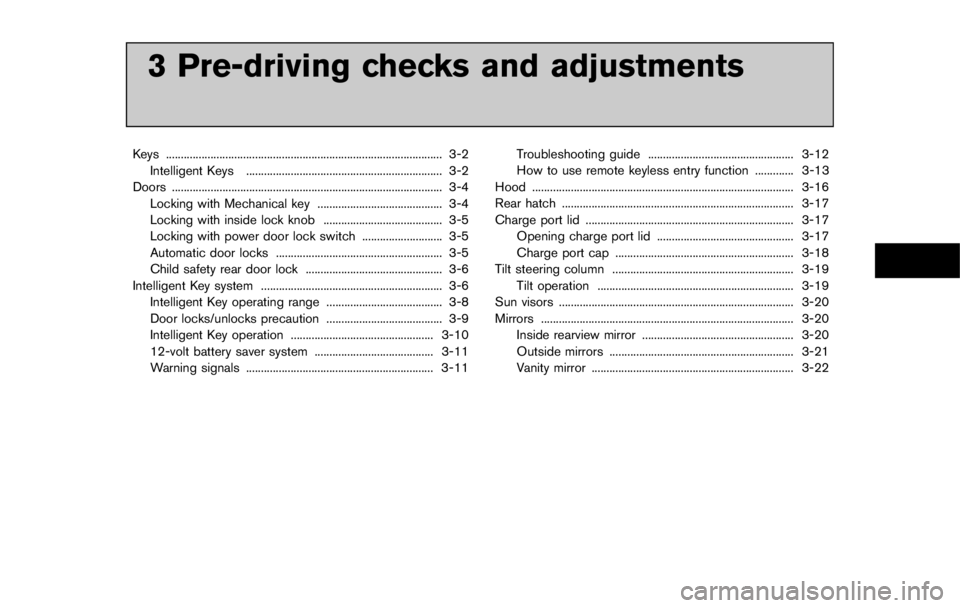NISSAN LEAF 2011 Owners Manual
Manufacturer: NISSAN, Model Year: 2011, Model line: LEAF, Model: NISSAN LEAF 2011Pages: 1062, PDF Size: 3.35 MB
Page 191 of 1062
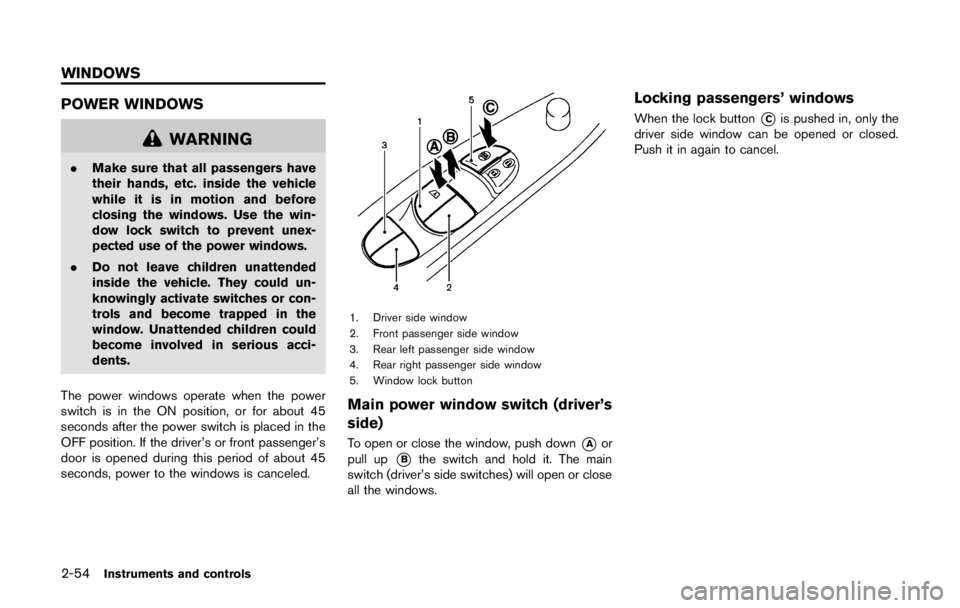
5 Starting and driving
Precautions when starting and driving ............................... 5-2Tire Pressure Monitoring System (TPMS) ................... 5-2
Avoiding collision and rollover ........................................ 5-5
Off-road recovery ............................................................... 5-5
Rapid air pressure loss ..................................................... 5-5
Drinking alcohol/drugs and driving ................................ 5-6
Push-button power switch .................................................... 5-7 Intelligent Key system ....................................................... 5-7
Operating range for EV (Electric Vehicle)
start function ........................................................................ 5-8
Power switch operation .................................................... 5-8
Power switch positions ..................................................... 5-9
Emergency EV (Electric Vehicle) shut off .................... 5-9
Intelligent Key battery discharge ................................. 5-10
Before starting the EV (Electric Vehicle) system .......... 5-10
Starting the EV (Electric Vehicle) system ....................... 5-11
Driving vehicle ........................................................................ 5-11 Electric shift control system ......................................... 5-11
Electric parking brake .......................................................... 5-15 Cruise control ........................................................................ 5-17
Precautions on cruise control .................................... 5-17Cruise control operation ............................................. 5-17
Increasing power economy ................................................ 5-19 Parking/parking on hills ....................................................... 5-20
Electric power steering system ........................................ 5-21
Brake system ......................................................................... 5-21 Braking precautions ..................................................... 5-21
Electric parking brake break-in .................................. 5-23
Anti-lock Braking System (ABS) .............................. 5-23
Vehicle Dynamic Control (VDC) system ........................ 5-24
Cold weather driving ........................................................... 5-26 Freeing a frozen door lock .......................................... 5-26
Antifreeze ........................................................................ 5-26
12-volt battery ................................................................ 5-26
Draining of coolant water ............................................ 5-26
Tire equipment ............................................................... 5-27
Special winter equipment ........................................... 5-27
Driving on snow or ice ................................................ 5-27
Freeing a frozen charge port lid ................................ 5-27
Page 192 of 1062
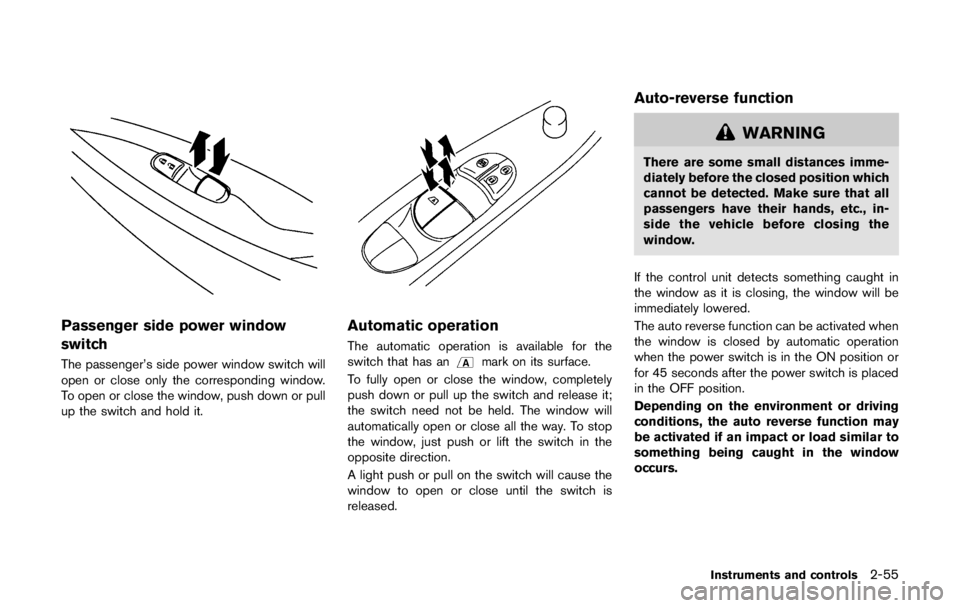
Page 193 of 1062
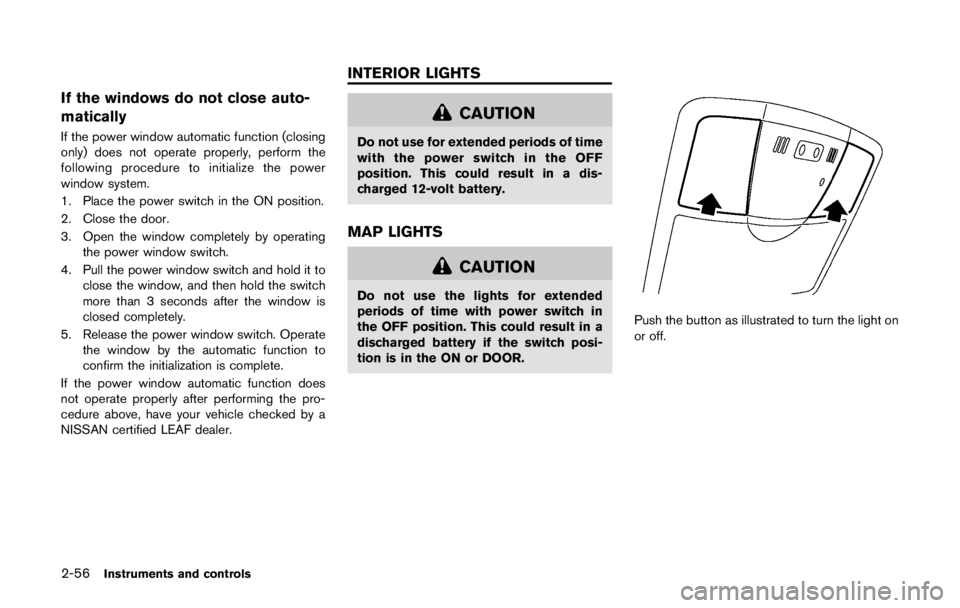
pressure warning light. Use a tire pressure
gauge to check the tire pressure.
. The Check tire Pressure warning appears on
the dot matrix liquid crystal display when the
low tire pressure warning light is illuminated
and low tire pressure is detected. The
Check tire Pressure warning turns off when
the low tire pressure warning light turns off.
The Check tire Pressure warning does not
appear if the low tire pressure warning light
illuminates to indicate a TPMS malfunction.
. Tire pressure rises and falls depending on
the heat caused by operation of the vehicle
and the outside temperature. A low outside
temperature can decrease the temperature
of the air inside the tire, which can cause a
lower tire inflation pressure. This may cause
the low tire pressure warning light to
illuminate. If the warning light illuminates in
low ambient temperature, check the tire
pressure for all four tires.
For additional information, see “Low tire pres-
sure warning light” in the “2. Instruments and
controls” section and “Tire Pressure Monitoring
System (TPMS)” in the “6. In case of emer-
gency” section.
Page 194 of 1062

.Do not place metalized film or any
metal parts (antenna, etc.) on the
windows. This may cause poor re-
ception of the signals from the tire
pressure sensors, and the TPMS will
not function properly.
Some devices and transmitters may temporarily
interfere with the operation of the TPMS and
cause the low tire pressure warning light to
illuminate. Some examples are:
. Facilities or electric devices using similar
radio frequencies that are near the vehicle.
. If a transmitter set to similar frequencies is
being used in or near the vehicle.
. If a computer (or similar equipment) or a DC/
AC converter is being used in or near the
vehicle.
FCC Notice:
For USA:
This device complies with Part 15 of the
FCC Rules. Operation is subject to the
following two conditions: (1) This device
may not cause harmful interference, and
(2) this device must accept any interfer-
ence received, including interference that
may cause undesired operation. NOTE:
Changes or modifications not expressly
approved by the party responsible for
compliance could void the user’s authority
to operate the equipment.
For Canada:
This device complies with RSS-210 of
Industry Canada. Operation is subject to
the following two conditions: (1) this
device may not cause interference, and
(2) this device must accept any interfer-
ence, including interference that may
cause undesired operation of the device.
TPMS with Easy Fill Tire Alert
When tire pressure is low, the low tire pressure
warning light illuminates.
This vehicle provides visual and audible signals
to help you inflate the tires to the recommended
COLD tire pressure.
Vehicle set-up:
1. Park the vehicle in a safe and level place.
2. Apply the parking brake and push the P
position switch on the selector lever.
3. Place the power switch in the ON position. Do not place in the READY to drive mode. Operation:
1. Add air to the tire.
2. After a few seconds, the hazard indicators
will start flashing.
3. When the designated pressure is reached, the horn beeps once and the hazard
indicators stop flashing.
4. Perform the above steps for each tire.
. If the tire is over-inflated more than approxi-
mately 4 psi (30 kPa), the horn beeps and
the hazard indicators flash 3 times. To
correct the pressure, push the core of the
valve stem on the tire briefly to release
pressure. When the pressure reaches the
designated pressure, the horn beeps once.
. If the hazard indicator does not flash within
approximately 15 seconds after starting to
inflate the tire, it indicates that the Easy Fill
Tire Alert is not operating.
. The TPMS will not activate the Easy Fill Tire
Alert under the following conditions:
— If there is interference from an external
device or transmitter.
— The air pressure from the inflation device is not sufficient to inflate the tire such as
those using a power socket.
Page 195 of 1062
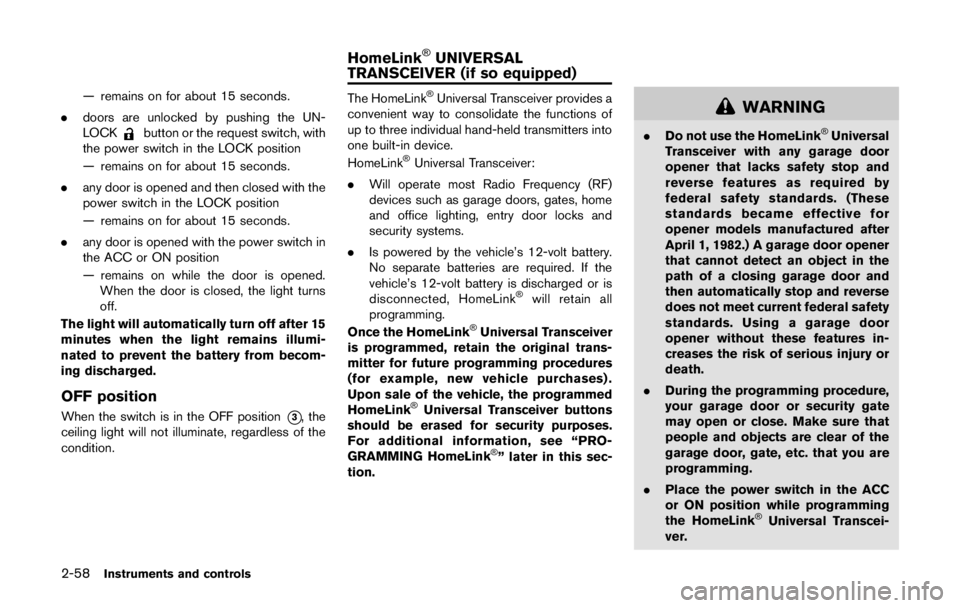
— If an electrical equipment is being used inor near the vehicle.
— There is a malfunction in the TPMS system.
— There is a malfunction in the horn or hazard indicators.
— If the Easy Fill Tire Alert does not operate due to TPMS interference, move the
vehicle about 3 ft (1 m) backward or
forward and try again.
If the Easy Fill Tire Alert is not working, use a tire
pressure gauge.
AVOIDING COLLISION AND ROLL-
OVER
Page 196 of 1062

Rapid air pressure loss can affect the handling
and stability of the vehicle, especially at highway
speeds.
Help prevent rapid air pressure loss by main-
taining the correct air pressure and visually
inspect the tires for wear and damage. See
“Wheels and tires” in the “8. Maintenance and
do-it-yourself” section of this manual.
If a tire rapidly loses air pressure or “blows-out”
while driving maintain control of the vehicle by
following the procedure below. Please note that
this procedure is only a general guide. The
vehicle must be driven as appropriate based on
the conditions of the vehicle, road and traffic.
Page 197 of 1062

.Removing or modifying the front
passenger seat may affect the func-
tion of the air bag system and result
in serious personal injury.
. Modifying or tampering with the
front passenger seat may result in
serious personal injury. For exam-
ple, do not change the front seats by
placing material on the seat cushion
or by installing additional trim ma-
terial, such as seat covers, on the
seat that is not specifically designed
to assure proper air bag operation.
Additionally, do not stow any ob-
jects under the front passenger seat
or the seat cushion and seatback.
Such objects may interfere with the
proper operation of the occupant
classification sensors.
. No unauthorized changes should be
made to any components or wiring
of the seat belt system. This may
affect the front air bag system.
Tampering with the seat belt system
may result in serious personal in-
jury.
. Work on and around the front air
bag system should be done by a NISSAN certified LEAF dealer. In-
stallation of electrical equipment
should also be done by a NISSAN
certified LEAF dealer. The Supple-
mental Restraint System (SRS) wir-
ing harnesses* should not be
modified or disconnected. Un-
authorized electrical test equipment
and probing devices should not be
used on the air bag system.
. A cracked windshield should be
replaced immediately by a qualified
repair facility. A cracked windshield
could affect the function of the
supplemental air bag system.
*The SRS wiring harness connectors are
yellow and orange for easy identification.
When selling your vehicle, we request that you
inform the buyer about the front air bag system
and guide the buyer to the appropriate sections
in this Owner’s Manual.
Page 198 of 1062

designed to inflate in higher severity side
collisions, although they may inflate if the forces
in another type of collision are similar to those of
a higher severity side impact. They are designed
to inflate on the side where the vehicle is
impacted. They may not inflate in certain side
collisions on the side where the vehicle is
impacted.
Vehicle damage (or lack of it) is not always an
indication of proper side air bag and curtain air
bag operation.
When the side air bags and curtain air bags
inflate, a fairly loud noise may be heard, followed
by release of smoke. This smoke is not harmful
and does not indicate a fire. Care should be
taken not to inhale it, as it may cause irritation
and choking. Those with a history of a breathing
condition should get fresh air promptly.
Side air bags, along with the use of seat belts,
help to cushion the impact force on the chest
and pelvic area of the front occupants. Curtain
air bags help to cushion the impact force to the
head of occupants in the front and rear outboard
seating positions. They can help save lives and
reduce serious injuries. However, side air bags
and curtain air bags may cause abrasions or
other injuries. Side air bags and curtain air bags
do not provide restraint to the lower body.The seat belts should be correctly worn and the
driver and passenger seated upright as far as
practical away from the side air bags. Rear seat
passengers should be seated as far away as
practical from the door finishers and side roof
rails. The side air bags and curtain air bags
inflate quickly in order to help protect the
occupants in the outboard seating positions.
Because of this, the force of the side air bags
and curtain air bags inflating can increase the
risk of injury if the occupant is too close to, or is
against, these air bag modules during inflation.
The side air bags and curtain air bags will deflate
quickly after the collision is over.
The side air bags and curtain air bags
operate only when the power switch is in
the ON position.
After turning the power switch to the ON
position, the supplemental air bag warning
light illuminates. The supplemental air bag
warning light will turn off after about 7
seconds if the systems are operational.
Page 199 of 1062
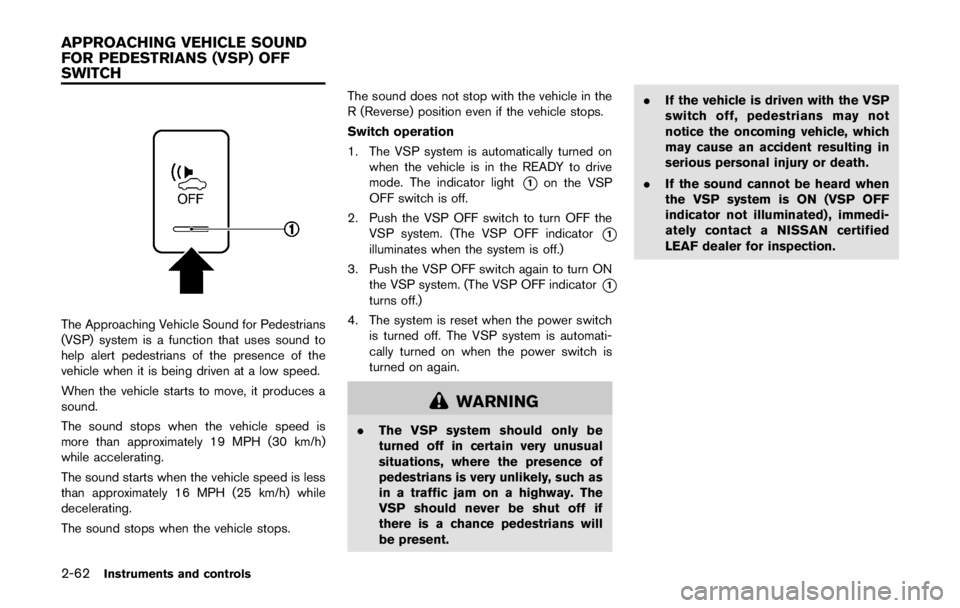
such as seat covers, around the side
air bag.
. Work around and on the side air bag
and curtain air bag systems should
be done by a NISSAN certified LEAF
dealer. Installation of electrical
equipment should also be done by
a NISSAN certified LEAF dealer. The
Supplemental Restraint System
(SRS) wiring harnesses* should not
be modified or disconnected. Un-
authorized electrical test equipment
and probing devices should not be
used on the side air bag and curtain
supplemental air bag systems.
*The SRS wiring harness connectors are
yellow and orange for easy identification.
When selling your vehicle, we request that you
inform the buyer about the side air bag and
curtain air bag systems and guide the buyer to
the appropriate sections in this Owner’s Manual.SEAT BELTS WITH PRETEN-
SIONERS (front seats)
Page 200 of 1062
